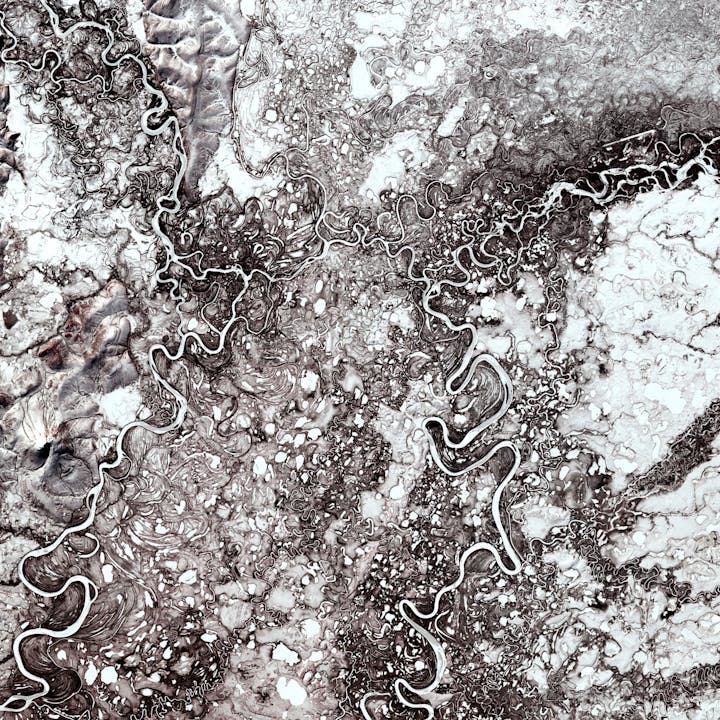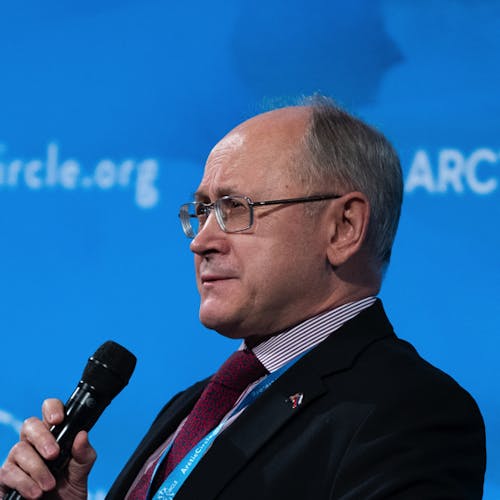There is a robust linear correlation between warming atmosphere and thawing of permafrost. Extrapolation of the trend of the last 30-40 years in Alaska, for example, shows that if things keep on going this way its permafrost will disappear by the end of the century. Moreover, the construction strength of the upper part of the frozen ground diminishes even faster than the speed of the atmosphere warming. These are among the core scientific conclusions I heard from the distinguished participants of the large-scale 5 full days international conference “Cryosphere Transformation and Geotechnical Safety ‘21” held in November 2021 in Salekhard, Yamal.
Meeting the Challenges of Permafrost Thawing: Reflections after the Salekhard Conference

In the Arctic, thawing permafrost is a problem above all for Russia, because 65,5% of its territory is permafrost and due to the prominent role of the Arctic in its economy.
It is a major challenge as well for Canada, US (Alaska), Greenland and northern Scandinavia. However, the issue is studied well beyond the region. It was little wonder to see among the participants of the conference experts not only from the above-mentioned Arctic places, but also from Israel, Poland, Germany, United Kingdom, Kazakhstan, Austria and even Mexico.
Possible further thawing of permafrost with all its well-described catastrophic consequences for people living and working in the Arctic - for nature and infrastructure – is among the crying arguments in favour of treating climate change as a major global challenge to the world. Besides, thawing permafrost is not only the product of atmosphere warming, but to a growing extent it is a booster due to the release of huge amounts of methane, so far frozen in melting ice. Methane is 25 times more potent as a greenhouse gas than carbon dioxide, currently our #1 enemy.
We do not know what will happen to our climate in the future, whether we shall succeed in curbing global warming or not. We do not know what will happen to our permafrost. We still hope that we shall not pass the tipping point and allow climate change to turn irreversible. However, when squeezed by all sorts of pressures, we have to act, we should think twice and consider all possible consequences. We know what we need to do, we know the urgency of the issue, but nevertheless we should stay sober-minded in fixing how exactly we do it. The remedy should not be worse than the illness it is supposed to cure. No doubt, we all will have to sacrifice something to reach our goals, albeit some more than others, but we should watch out not to call for sacrifices which are unbearable at any particular moment. Do we need more revolutions? For example, hasty and reckless decarbonization may deplete our financial resources needed for green energy transition as well as transitional energy sources, or result in energy and supply crises like the current one in Europe. However, smart (I don’t imply slow) decarbonization can bring new sources of development and stimulate new virtuous circles in economy and life.
On the one hand, proceeding from the understanding that permafrost thawing is already an inevitable process would require a shift in strategic planning, relocation of millions of Arctic inhabitants, enormous investments into systems of preparedness and response, technologies of mitigation of and adaptation to thawing, etc. To catch up with the dynamics of such a situation we shall have to act fast and early and no later than today (some will say yesterday). But all this would imply that we doubt our ability to stop and reverse climate change. On the other hand, if we believe that we can succeed in dealing with the root cause of the problem of climate change, then all our efforts and resources should be concentrated on this task. Focusing on one of its consequences, namely permafrost thawing, would become unjustifiable and an excessive deviation of resources. A type of zero-sum game: the more resources we spend on adaptation to permafrost thawing, the less are left for mitigating climate change, and vice versa. In real life, of course, we shall try to do both, and make adjustments according to the situation on the ground. However, logic suggests that dealing with the root cause of a problem is more important than fighting its consequences. Hence the new Russian 2050 Strategy of Social and Economic Development with Low Greenhouse Gas Emission, adopted by the government two weeks before the COP26 in Glasgow, and providing for a set of measures to assure 80% reduction of net greenhouse gas emissions compared to 1990 levels on a way to carbon-neutrality by 2060.
That said, in any case - even in an ideal one - inertia of permafrost thawing will stay for unpredictable time. We shall still need to prepare ourselves, without ungrounded alarmism, for an unfortunate turn of events, just to be on the safe side.
Participants of the Salekhard conference focused on the practical facet of the matter, which is geotechnical safety. This made the conference unique. The experts have meticulously reported on different ways of monitoring and measuring permafrost degradation and stability of buildings, bridges, roads, railways, pipelines, airstrips, dams and other infrastructure built on permafrost. They put forward a lot of ideas and practical proposals on how to increase reliability of existing infrastructure, on how to adjust technical requirements and use modern technology while building new objects on risky permafrost and on how to better organize this work. They included, inter alia, establishment of regional centers/laboratories of permafrost monitoring and cryotechnology in addition to the federal center that is now being created. Experts were unanimous on the need of updated federal and regional industrial standards, flexible enough to allow adjustments depending on climate trends and local soil conditions. On the technical side, new sensors, georadar probes, laser detectors, seismic monitoring/measurement systems and other most advanced equipment, technologies, professional software were discussed. Different techniques to strengthen foundations of buildings affected by weakening soils/permafrost were the subjects of numerous case studies, mainly various ways and equipment of thermostabilization, as well as piling. New construction materials and experiments were proposed.
My impression from this discussion is that we are not helpless and unarmed in the face of the consequences of permafrost thawing. This does not mean that we can sit idle.
On the contrary, research and studies should continue, develop and diversify. Happily, we are not starting from scratch. For obvious reasons Russia is a leader in fundamental and practical cryology, but there is a lot to be done, especially in involving new generations of researchers and practitioners, in strengthening the connection between science and business, including achievements of the ongoing fourth industrial and technical revolution, in producing reliable long-term forecasts, etc.
No. 16/2021, 29 November 2021
This article is a part of the Arctic Circle Journal Series which provides insight, understanding and new information. The material represents the opinions of the author but not those of Arctic Circle.
